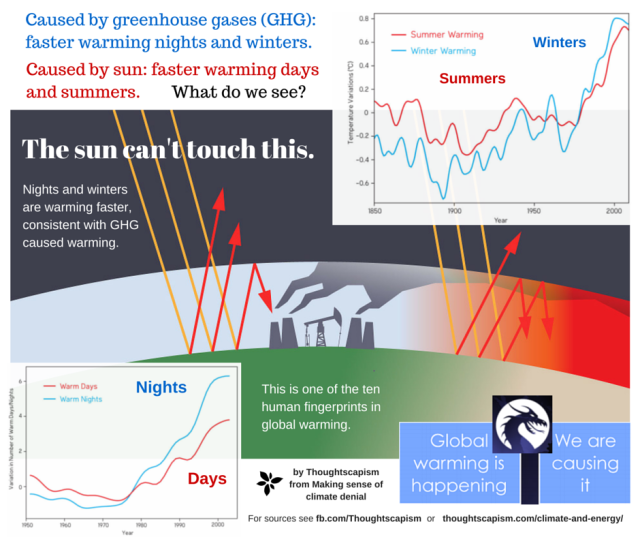In part I, we looked at some of the ways in which changes in axial obliquity and precession can affect the climate. In this article, we’ll look at orbital eccentricity, apsidal precession and orbital inclination, and some of their climatological consequences.
Orbital Eccentricity:
This refers how elliptical earth’s orbital path is. The greater the eccentricity of a planet’s orbital path, the less circle-like and more elliptical (oval-like) it is. An ellipse has an eccentricity greater than or equal to zero, but less than one. An eccentricity value of e = 0 corresponds to a perfect circle, whereas e = 1 corresponds to a parabola, and e > 1 corresponds to a hyperbola. At higher eccentricity values (albeit less than one), there is a greater discrepancy between a planet’s perihelion and aphelion: a planet’s nearest and furthest points from the Sun during its orbit.
Earth’s orbital eccentricity changes over cycles of about 100,000 and 413,000 years or so due to the gravitational influence of massive planets such as Jupiter and Saturn. During these cycles, earth’s orbital eccentricity varies between about e = 0 (perfectly circular) to about e = 0.06.
Orbital eccentricity is the only Milankovitch cycle that affects total annual insolation on the earth: the total amount of solar energy per unit area reaching the earth, and it does so by a factor of 1/(1- e2 )1/2 for a given solar irradiance (Spiegel 2010). That means that while eccentricity (e) varies between 0 and 0.06, insolation should vary between a factor of 1/(1-(0)2)1/2 = 1 and a factor of 1/(1- (0.06)2 )1/2 = 1.0018 for a given solar output. Currently, Earth’s eccentricity is approximately e = 0.017, which works out to 1/(1-(0.017)2)1/2 = 1.00014. So the variation in insolation isn’t very significant. However, that doesn’t mean that these cycles don’t have a significant effect on climate. At greater eccentricity values, the seasons occurring while Earth is closer to the aphelion are of longer duration than the ones occurring while the Earth is closer to the perihelion.
Additionally, the regional and seasonal climatological effects of changes in axial obliquity and precession are more pronounced during periods of greater orbital eccentricity than when Earth’s orbit is circular (or nearly circular). This is because greater eccentricity values correspond to greater differences between the closest point to the sun (perihelion) and furthest point (aphelion) in Earth’s orbital path. In turn, those greater differences between the perihelion and aphelion can either amplify or moderate the discrepancies in seasonal insolation caused by axial tilt and precession. A hemisphere tilted towards the sun at the perihelion and away from the sun at the aphelion would have its summers and winters slightly reinforced, while a hemisphere tilted away from the sun at the perihelion and towards the sun at the aphelion would experience a slight moderating effect on its summers and winters.
Apsidal precession:
The theory of Milankovitch cycles also predicts that the orientation of earth’s entire elliptical orbital path rotates in cycles of 21,000 years. That is to say that the location of the perihelion in Earth’s orbit changes over thousands of years (Greenberg 1981). The following graphic should clarify what is meant by this:
There is some evidence to suggest that these changes in the orientation of the perihelion work together in combination with the axial precession cycle to affect temporal and geographical insolation and precipitation patterns (Merlis 2013). In other words, it affects where and when higher and lower local levels of sunshine and rain occur.
Orbital Inclination:
Although the planets and asteroids follow elliptical orbits in accordance with Kepler’s first law, they don’t all orbit in precisely the same plane. Their orbital planes are often inclined with respect to one another, and their angles of inclination can change slightly over time. The Earth’s orbital plane is also called the Plane of the Ecliptic (or simply the ecliptic).
The orbital inclination angles of planets, asteroids and other celestial objects are usually computed with respect to Earth’s ecliptic, and thus the Earth’s inclination with respect to its own ecliptic would therefore be zero by definition, but this is primarily for purposes of convenience. The inclination of the ecliptic changes over time on a cycle of approximately 70,000 years. This is known as Precession of the Ecliptic. Milankovitch did not study this cycle, but I’ve included it anyway for the sake of completeness. Additionally, its climatological effects are still a matter of scientific debate. Earlier calculations suggested that its effect on insolation would be negligible (Berger 1976), but other researchers have postulated that it may play a role in the explanation of one of the hitherto unsolved problems raised by the theory of Milankovitch cycles (Muller 1995). In fact, Muller et al even went as far as to argue that when the inclination is computed with respect to the Invariable Plane of the solar system: the plane through the solar system’s barycenter (center of mass) and perpendicular to its angular momentum vector (approximately the orbital plane of Jupiter), rather than with respect to Earth’s 1850 orbital plane, the cycle works out to closer to 100,000 years rather than the traditionally accepted 70,000 years (Muller 1995).The relevance of this claim will become clearer in part III when we discuss how these cycles combine together to affect climate, and when we take a look at one of the most prominent unsolved questions raised by the theory.
References:
Berger, A. L. (1976). Obliquity and precession for the last 5 000 000 years.Astronomy and Astrophysics, 51, 127-135.
Greenberg, R. (1981). Apsidal precession of orbits about an oblate planet.The Astronomical Journal, 86, 912-914.
Merlis, T. M., Schneider, T., Bordoni, S., & Eisenman, I. (2013). The tropical precipitation response to orbital precession. Journal of Climate, 26(6), 2010-2021.
Muller, R. A., & MacDonald, G. J. (1995). Glacial cycles and orbital inclination. Nature, 377(6545), 107-108.
Spiegel, D. S., Raymond, S. N., Dressing, C. D., Scharf, C. A., & Mitchell, J. L. (2010). Generalized Milankovitch cycles and long-term climatic habitability.The Astrophysical Journal, 721(2), 1308.
Photo Credits:
Orbital Eccentricity: By NASA, Mysid – Vectorized by Mysid in Inkscape from NASA image at http://earthobservatory.nasa.gov/Library/Giants/Milankovitch/Images/ecc_zero.gif., Public Domain, https://commons.wikimedia.org/w/index.php?curid=3993043
Apsidal Precession and the Seasons: By Krishnavedala (Own work) [CC BY-SA 3.0 (http://creativecommons.org/licenses/by-sa/3.0)], via Wikimedia Commons.
Orbital Inclination: By Lasunncty (talk). (Lasunncty (talk)) [CC-BY-SA-3.0 (http://creativecommons.org/licenses/by-sa/3.0/) or GFDL (http://www.gnu.org/copyleft/fdl.html)], via Wikimedia Commons


![By Lasunncty (talk). (Lasunncty (talk)) [CC-BY-SA-3.0 (http://creativecommons.org/licenses/by-sa/3.0/) or GFDL (http://www.gnu.org/copyleft/fdl.html)], via Wikimedia Commons](http://crediblehulk.org/wp-content/uploads/2016/10/Orbital_Inclination.png)



1 Comment
Milankovitch Cycles and Climate: Part III – Putting it All Together – The Credible Hulk · October 13, 2016 at 11:04 pm
[…] parts I and II, we looked at axial obliquity, axial precession, apsidal precession, orbital eccentricity and […]
Comments are closed.